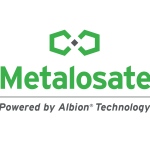
In today’s very competitive micronutrient market, we are often asked what sets our products apart from the others and why are they better than anything else available. The answers to these questions are not short, and they involve many aspects of providing not only superior products to our customers, but also involve providing service.
Balchem has been involved in plant nutrition for over 30 years. In that period of time, we have learned many things and have always been very dedicated to performing ongoing research with the Metalosate® products. One series of research projects in the early days of development of the Metalosate® products dealt with radioactive isotopes. The following text is taken from a paper co-written by Harvey Ashmead, Ph.D. and Stephen Ashmead, M.S. and presented at an international conference on plant nutrition in 1995.
“Albion has conducted research in cooperation with many universities involving radioactive isotopes. Experimental research involving isotopes often provides the basis of proof of a compound’s effectiveness. Such is the case with Balchem’s metal amino acid chelates. In all of Albion’s radioisotope trials, the radioisotope label is chelated with the same ligands as the rest of the chelate and then administered to the organism. In each case any label that appears in the organism is directly attributable to the chelate. In addition, any physiological function that is discernible with the radiolabel can be directly attributable to the chelate.
In conjunction with Weber State University (Ogden, Utah), Balchem has conducted a series of radioisotope trials in various plants which show the translocation of Albion’s chelates within the plant tissues in greater quantities than inorganic salts and ethylenediaminetetra-acetic acid (EDTA) salts. For example 59Fe was applied as a topical solution to tomato plant leaves as an amino acid chelate, a sulfate or an EDTA chelate. After application, the leaf was thoroughly washed and assayed for 59Fe. In addition, the leaf adjacent to the treated leaf and the stem of the treated leaf were also analyzed for 59Fe content. The results are summarized in Table 1., and they indicated greater absorption with Albion’s chelates.
Balchem Plant Nutrition has conducted additional radioisotope research using 65Zn, 54Mn, and 59Fe in cotton, soybean, tomatoes, and corn plants with similar results and distributions.”
To get the most value for money spent, we recommend that Metalosate® products be your product of choice.
Table 1: Absorption of Foliar Applied 59Fe from Different Sources by Tomato Plant Leaves (ccpm/mg*)
| Plant Part | Metalosate | EDTA | Sulfate |
| Treated Leaf | 43.10 | 26.60 | 29.40 |
| Adjacent Leaf | 0.20 | 0.10 | 0.20 |
| Treated Stem | 0.30 | 0.03 | 0.14 |


